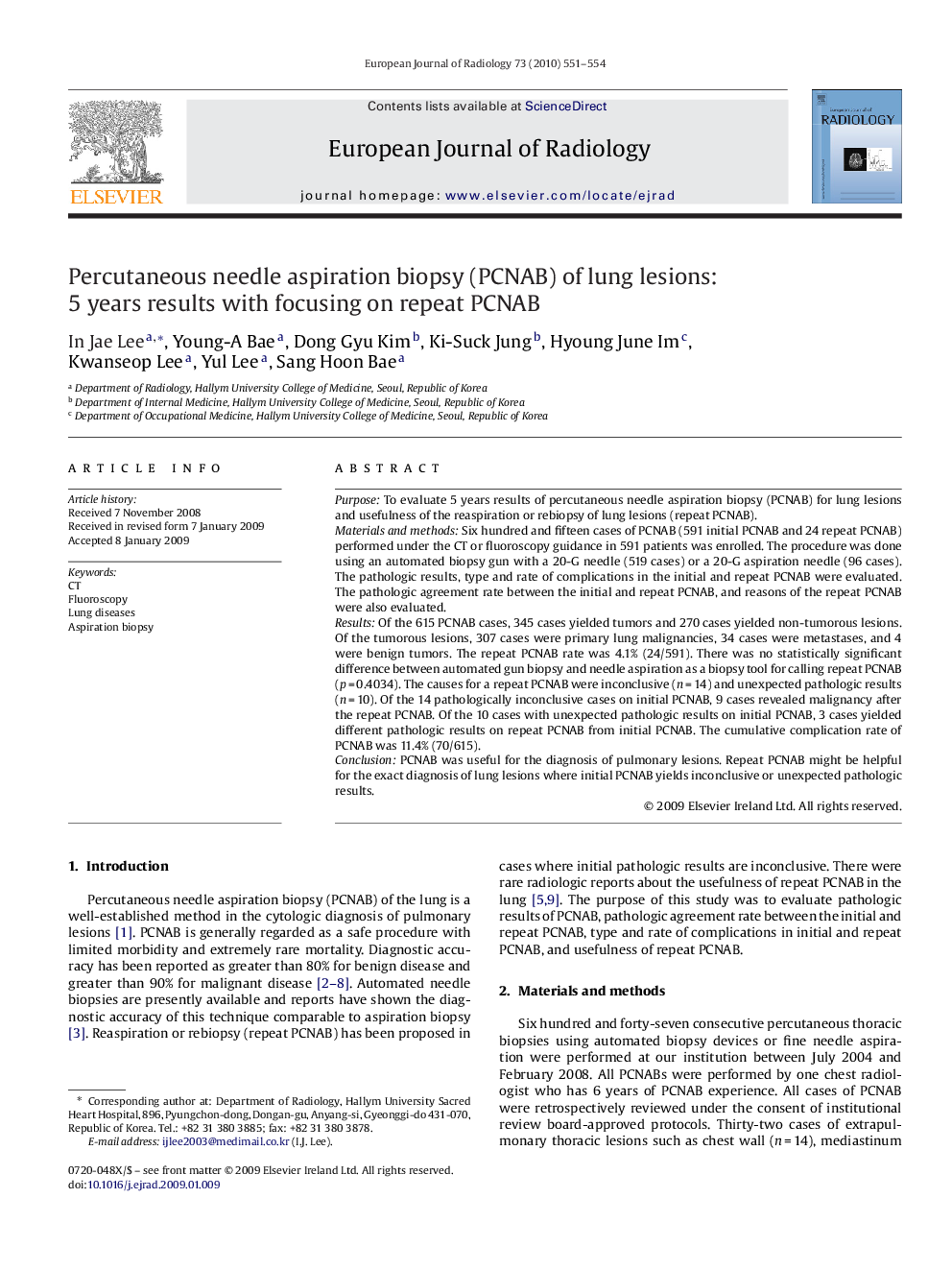| Article ID | Journal | Published Year | Pages | File Type |
|---|---|---|---|---|
| 4226852 | European Journal of Radiology | 2010 | 4 Pages |
PurposeTo evaluate 5 years results of percutaneous needle aspiration biopsy (PCNAB) for lung lesions and usefulness of the reaspiration or rebiopsy of lung lesions (repeat PCNAB).Materials and methodsSix hundred and fifteen cases of PCNAB (591 initial PCNAB and 24 repeat PCNAB) performed under the CT or fluoroscopy guidance in 591 patients was enrolled. The procedure was done using an automated biopsy gun with a 20-G needle (519 cases) or a 20-G aspiration needle (96 cases). The pathologic results, type and rate of complications in the initial and repeat PCNAB were evaluated. The pathologic agreement rate between the initial and repeat PCNAB, and reasons of the repeat PCNAB were also evaluated.ResultsOf the 615 PCNAB cases, 345 cases yielded tumors and 270 cases yielded non-tumorous lesions. Of the tumorous lesions, 307 cases were primary lung malignancies, 34 cases were metastases, and 4 were benign tumors. The repeat PCNAB rate was 4.1% (24/591). There was no statistically significant difference between automated gun biopsy and needle aspiration as a biopsy tool for calling repeat PCNAB (p = 0.4034). The causes for a repeat PCNAB were inconclusive (n = 14) and unexpected pathologic results (n = 10). Of the 14 pathologically inconclusive cases on initial PCNAB, 9 cases revealed malignancy after the repeat PCNAB. Of the 10 cases with unexpected pathologic results on initial PCNAB, 3 cases yielded different pathologic results on repeat PCNAB from initial PCNAB. The cumulative complication rate of PCNAB was 11.4% (70/615).ConclusionPCNAB was useful for the diagnosis of pulmonary lesions. Repeat PCNAB might be helpful for the exact diagnosis of lung lesions where initial PCNAB yields inconclusive or unexpected pathologic results.
